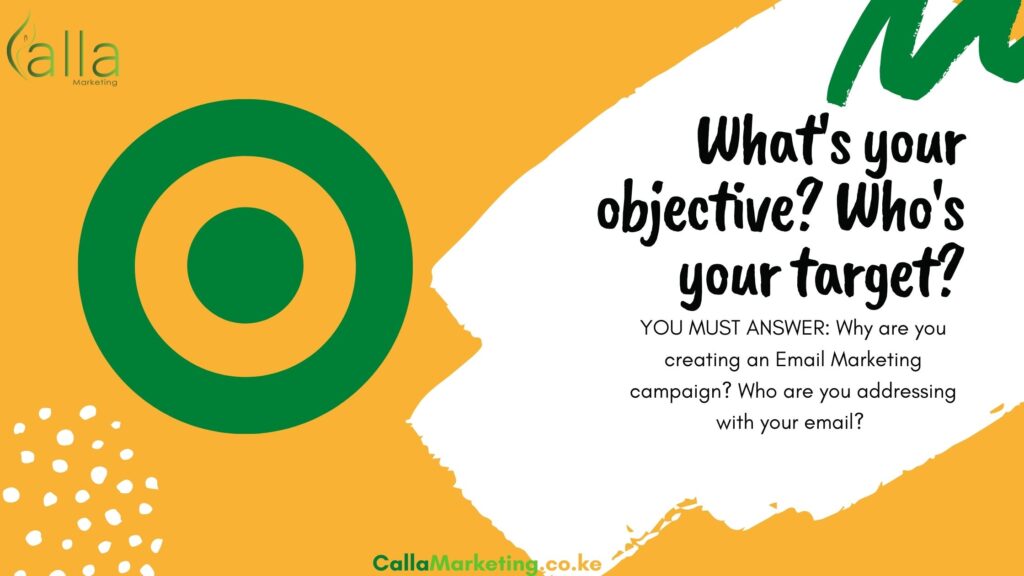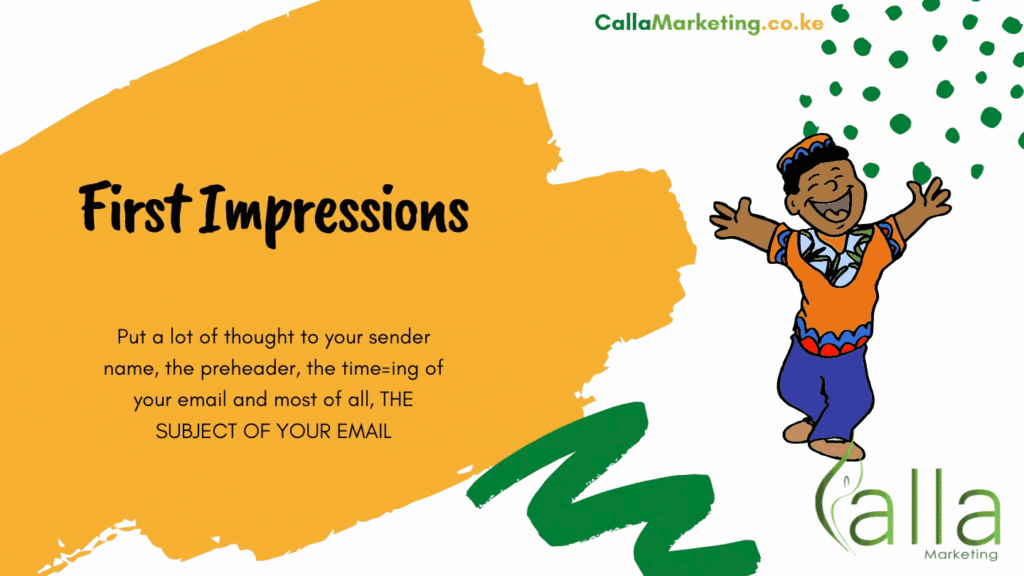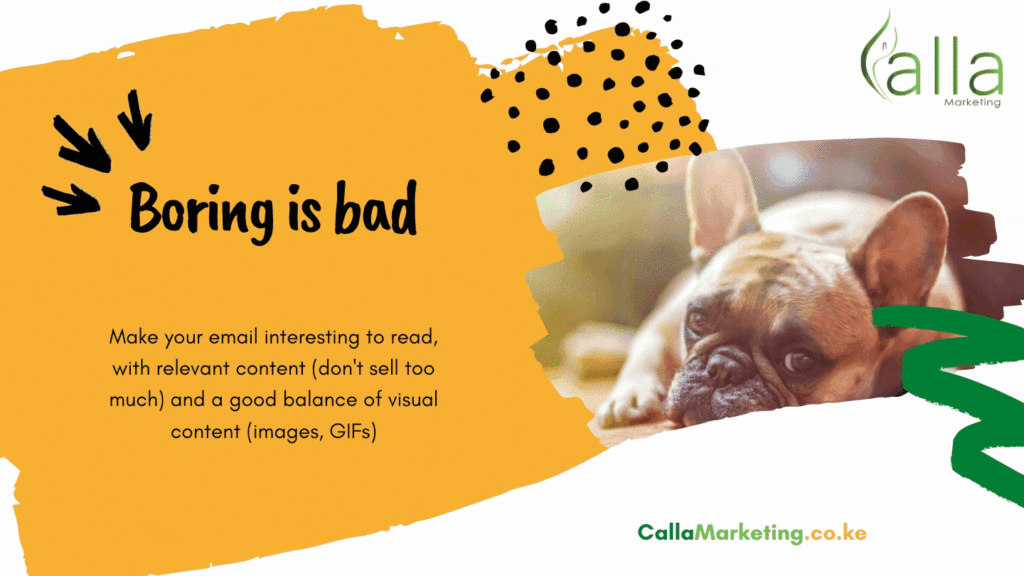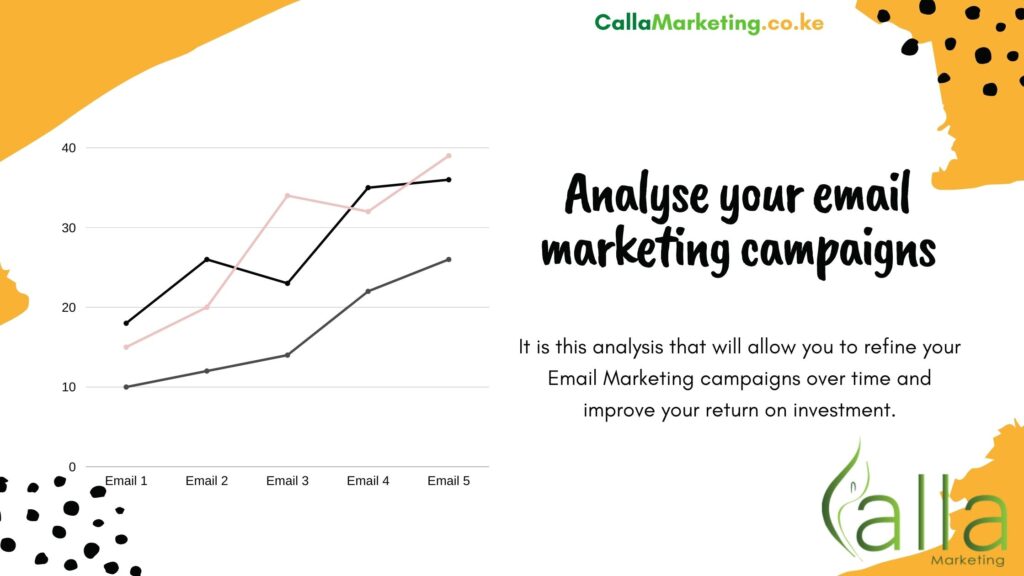Even if some doubt its effectiveness, Email Marketing remains an essential tool in any good marketing strategy. Email allows you both to convert your prospects into customers and to retain them. You still have to know how to use it, and that’s what this post covers
First. to reap all these benefits, it is necessary to think about your Email Marketing in the smallest details.
Why are we talking about Email Marketing?
The answer is simple: to gain customers with Email Marketing, it is essential to build a complete Email Marketing strategy, just like marketing.
Email Marketing is about of creating business emails adapted to the expectations and behaviors of your target, to meet your goals.
Simply, to do effective Email Marketing, it is important to know your target, your personas. The secret is to send the right message to the right person at the right time.
For this, it is essential to understand the problems of your target and the questions they are asking.
Critics of marketing emails are generally so for lack of results. A few days ago, one of our clients questioned why we suggested email marketing in our proposal. Yet they had run campaigns previously without any results.
As we dug in, the reasons for the failure were obvious – sending mass emails, without any personalization and contextualization of the message!
So, what are the steps to winning in email marketing? Here we go:
Step 1: Determine your objectives and analyze your target
Specific objectives:
The first question to ask yourself is: “Why create an Email Marketing campaign?” What do you expect from it? If your answer comes down to “To sell, of course!” You are on the wrong track.
Of course, the goal will often be t0 make sales. However, it is an end, not an objective. This purpose is made up of multiple objectives, some of which can be achieved through Email Marketing.
To develop your turnover, you must make yourself more visible, gain new market share, generate more traffic on your website, more quotes, more incoming contacts…
In-depth knowledge of the target:
Creating Email Marketing is an opportunity for you to deliver a message. This message must be understood and appealing. To deliver the right message, you need to know your target audience inside out.
What are the needs, expectations and behaviors of your target? What are their concerns, their centers of interest?
You must correctly determine the profile of your target in order to hit the mark. Very often, you will determine different profiles and understand that you will not be able to communicate in the same way with A and B.
To create an effective email, it will often be essential to segment your contact database in order to best adapt your message. Only an in-depth study of your target will allow you to segment it optimally.
In addition, it is essential to take into account the maturity of your prospect to send him the perfect email. A buyer who has only just become aware of his need will not have the same communication needs as a buyer who has already compared several solutions.

Step 2: Make a good first impression
To create Email Marketing that will allow you to achieve your objectives, you must do everything possible to ensure that it is opened by the recipient! If no one is reading your emails, then you can be sure that you won’t get requests for quotes or visits to your website.
Here are a few points you should incorporate:
Sender Name: Use a personal identity such as your first name or even the company name.
Email Subject: It should be clear and concise. Your title should not be too long to be read in full from a smartphone;
The Preheader: This is the first line of text in your email next to/below your subject line in the email box. The Preheader allows you to give additional context to the email.
The time of sending: Another criterion having a direct influence on the open rate is the time of sending. There is no typical optimal time to send emails – it varies across industries and targets. Do various tests and analyze the statistics.

Step 3: Charm your recipients
You have convinced the recipient to open your email. It is probably the hardest but it is not over. You must now seduce him with your content, interest him to make him want to take action.
Relevant content
Creating effective emails inevitably requires relevant content. Relevant content is content that meets two requirements: The content must above all be clearly related to the subject of your email. The subject is a promise made to the recipient and the content must be up to par.
Then your content must be adapted to your target: how does your target read their emails? At what times? From which devices? What content is he looking for?
We usually say that a relevant communication strategy, in the age of the Internet and social media, is only 20% promotional content for 80% high added-value content.
So do not drown your target with promotional Email Marketing. You will not get the expected returns. Provide them with content that gives them something extra. The content can be informative, educational, or entertaining.
Visual content (but not too much!)
Emails are more and more read on tablets and smartphones. To create the perfect email marketing, you have to think very carefully about its design.
A good email contains relevant images that perfectly illustrate the text because the truth is, the vast majority of emails are not read in their entirety. Often times, it’s the design that persuades the reader to click.
Be careful, too many images will have a negative impact on your deliverability rate. Concretely, an email with too many images will be considered as SPAM and will not even reach your target’s inbox. You must therefore be attentive to the image: text ratio of your email.
Content that is neither too short nor too long!
As we saw in the previous point, the image/text ratio should clearly shift in favor of the text. It must therefore be of a minimum length.
However, the content of your Email Marketing should not be too long. Think about the objective of your email and the expectations of your target to stay focused!

Step 4: Seduce the recipient
At this stage, your target has received your email, they opened it and took note of it. OK, and s/he closes it and continues with her life? No, that’s not your goal!
You must now “wrap up” by convincing your target to take action. For this, you must work on two key points: the Call-To-Action and the Landing Page.
Call-To-Action:
Call-To-Action is a button that calls to action. Some of the more traditional ones are like: “buy now”, “add to cart” or “register”.
The Call-To-Action is the conclusion of your email. It must punctuate your message and represent the fulfillment of your departure promise (the subject of the email).
The Landing Page:
The goal of your Email Marketing campaign is probably not just one click. Behind, you must convert this click and it inevitably goes through an optimal Landing Page.
A Landing Page is a page on which the person who clicked the button of your email lands. For a maximum conversion rate, it must be thought through to the smallest detail.
The success of your Email Marketing campaign depends on the quality of your Landing Page. This must be thought out for your final goal.
Contact Calla Marketing for help with landing pages that convert.
Step 5: Analyze and optimize your email marketing campaigns
To create the perfect Email Marketing campaign, it is essential to analyze each of your campaigns. You won’t create the perfect Email Marketing the first time. As you can see from the first 4 steps, a marketing email is made up of different ingredients, each equally important.
To analyze your Email Marketing campaign, you must determine the KPIs (Key Performance Indicators) allowing you to gauge the level of achievement of your initial objective. Here are the main indicators to follow in an Email Marketing campaign :
The deliverability rate: it allows you to measure the quality of your email address base. It is the number of emails delivered divided by the number of emails sent.
The open rate: this is the number of emails opened divided by the number of emails delivered. Here you measure your reputation as an advertiser. If your open rate is low, it means that your contacts perceive you as an uninteresting advertiser or worse, a spammer!
Click-through rate: this is the number of clicks divided by the number of emails delivered.
The reactivity rate: this may be the most relevant indicator. The reactivity rate allows you to concretely measure the interest of your campaign and the relevance of your message. The responsiveness rate is the number of clicks divided by the number of emails opened.
The churn rate: This is the number of unsubscribes divided by the number of emails sent.

So, how do you get the right results?
These key indicators allow you to analyze the effectiveness of your Email Marketing campaign. Then you have to draw the right conclusions and do everything to improve them. To do this, you can use the A/B Testing method.
A/B Testing:
As the name might suggest, A/B Testing involves testing two variations of your Email Marketing to determine the optimal recipe. Ok, but how is it going?
A / B Testing is simple:
- Create version A and version B of your Email Marketing campaign.
- Select two samples from your contact database and send version A to one and version B to the other;
- Analyze the statistics of these two email versions.
- Send the most efficient version to the rest of your database.
A/B Testing allows you to optimize the results of your Email Marketing campaign. Carried out over the campaigns, A / B Testing will bring you closer to perfect Email Marketing strategy.
With A/B Testing, you can test all the elements presented in the previous 4 steps.
Please note, it is recommended that you only test one element by Email Marketing. If you create an Email Marketing B that is totally different from Email Marketing A, you will have a hard time determining which elements are the most effective: is it the moment of sending that played? The contents ? The Call-To-Action or the object?
Conclusion: Do Email Marketing, but with a strategy
As you have seen from this article, Email Marketing cannot be taken casually if you want to generate a return on investment.
Creating effective Email Marketing means above all creating an Email Marketing strategy adapted to the expectations and behaviors of your targets.
In order to send the right message at the right time, you must clearly define the questions that your target asks themselves throughout their purchasing journey and the problems they encounter in order to contextualize the message of your Email Marketing.
The second thing is to properly segment your contact base. You will be able to create a personalized Email Marketing and optimize your conversion rate.
Finally, creating effective Email Marketing also means creating an optimal conversion tunnel. In other words, you must integrate into your email a visible and inviting call to action button that will send the clicker to a landing page optimized for conversion.
After sending your email, do not forget to analyze its performance. It is this analysis that will allow you to refine your Email Marketing campaigns over time and improve your return on investment.
Would you like assistance with your email marketing strategy? Calla Marketing offers professional email marketing and automation solutions to businesses in all industries and sizes.